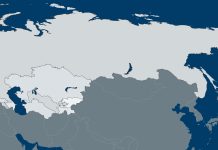The Geopolitical Futures model argues that the northern tier of entities are the center of power in the global system and define how the system works at any given moment. The anchors of the northern tier are China, Russia, the European Union and the United States. These four entities collectively make up over 60 percent of global GDP, the measure of economic production. They also collectively contain a majority of global military power. They’re each different in the amount of economic and military power they contain. Russia has a relatively low GDP but significant military power. The EU members are relative weak militarily but have substantial GDP collectively. The U.S. and China possess both types of power.
The northern tier is dealing with economic, political and military challenges. The three frequently occur together when the northern tier undergoes this level of dysfunction. The likelihood of the problems spreading globally is almost certain over time. The likelihood is also high of this period leaving the northern tier profoundly changed. World War II was a military, economic and political phenomenon involving most of these countries. It led to economic and political transformations that still shape the world. So, the question is what the current crisis of the northern tier will lead to.
The northern tier is experiencing profound economic stresses, some linked to other issues, some one of a kind. Most significant of the latter is the economic decline of China. China grew extraordinarily over the past 40 years. A great deal of that had to do with the damage Mao did to China. The growth rate depended on foreign markets buying Chinese exports and the inflow of foreign capital. Now, the global economy’s constriction prevents China from continuing to surge exports, increasing the risk of investing in China.
At the same time the U.S. economy is going into recession. Trouble began with the solutions to the COVID-19 crisis in 2020. But as important and little mentioned is that 12 years elapsed between the subprime recession of 2008 and the COVID-19 recession, which is much longer than usual. Recessions are part of the indispensable balancing process in economies, when inefficient enterprises are destroyed and stop absorbing capital needed elsewhere. The longer the time between recessions, the greater the inefficiencies that infest the economy. For whatever reason, the growing inefficiency in the economy was not the trigger for the recession, but the pandemic was. Therefore, the recession and all that followed was not simply the result of economic cycles but rather the consequence of a non-economic force, and in that sense painful but not beneficial. Non-economically triggered recessions tend to destroy without also rebuilding.
The Ukrainian-Russian war imposed greater constraints on the system. The U.S. launched a financial war against Russia; Russia countered with a supply chain attack. The supply chain attack particularly struck the European Union – institutionally the most fragile of the northern tier – increasing the price of energy and decreasing its availability.
Russia faces a war it is far from winning, with ongoing financial stress, and a supply chain intrusion that brings pressure on others but also on itself. Russia is the weakest economy among the four northern tier actors, and its status depends on military power, which has been tarnished. A defeat coupled with a weak economy would leave Russia in the top tier geographically but would move it closer to a developing economy.
All these developments are linked. The war in Ukraine links the economic war to the stability of the EU as well as to capital availability for China. Ending the Ukrainian episode with a Russian victory would force U.S. defensive power into Europe.
There are four layers to this crisis. The first is a war that, more than most wars, has a major economic dimension, which is generating a supply chain crisis in the European Union, a bloc that has been under extensive pressure over internal financial matters. The second dimension is the broader supply chain problem, which is affecting much of the world with shortages of primary commodities and is thus creating crises outside the northern tier that will flow back on them. The third is a cyclical recession in the United States, compounded by the disruption of the global supply chain that has raised prices on energy substantially. Fourth, and not incidentally, is the decline in appetite for Chinese exports, along with a shortage of key imported items and investment capital.
The northern tier is the foundation of the global system primarily because economic and military power is centered there. The region can supply stability elsewhere. But that stability depends, if not on cooperation, then at least on a degree of indifference to whatever others are doing. At this point, all actions can impact others in the tier, and the combined economic and military conflict means that what little collaboration there has been has broken down.
The war might be at the center of this, save that the decline of China, economic slowdown in the U.S., and fragmentation in Europe preceded the war. The war compounded the problems, but its end will not solve them. In the end, the solution rests with the U.S., the largest member of the northern tier economically and militarily. The problem it must solve is supplying energy to Europe without asking the Russians. Since there is no solution that can be achieved in sufficient time, a more likely outcome is an extended global crisis in which the U.S. will seek primarily to defend itself. Either way, the world is evolving in front of our eyes.
Each of these entities is increasingly unstable. The instability is not unprecedented. The fact that all four members of the tier are experiencing substantial levels of instability is. The issue is what the world looks like if the northern tier destabilizes at the same time. The global interaction is perhaps most important and worth considering, even if the tier avoids destabilization en masse.






